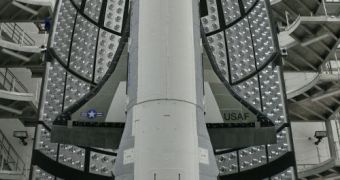Officials at the Boeing Company announced that the first unmanned vehicle to be constructed and operated by the United States has returned home safely today, December 3.
The Orbital Test Vehicle-1 (OTV-1) is a spacecraft developed on the X-37B platform developed by the corporation for NASA. The American space agency surrendered to project to the US Defense Advanced Research Projects Agency (DARPA) a few years later.
At this point, the OTV-1 is operated by the US Air Force, which launched it into space aboard an Atlas 5 delivery system on April 22, from the Cape Canaveral Air Force Station, in California.
The spacecraft landed autonomously using its autopilot mode at 1:16 am PST (0916 GMT), on a Vandenberg Air Force Base (VAFB) runway, in California, reports from the USAF confirm,.
Authorities with the Air Force Rapid Capabilities Office (RCO) conducted this maiden voyage in order to test all systems aboard the spacecraft, and to determine whether it can indeed stay airborne for as much as 270 days.
The mission “is a historical first, not only for Vandenberg Air Force Base, but for the Air Force and our nation to receive a recoverable spacecraft here and really take a step forward in advancing unmanned space flight,” said before the actual landing Col. Richard Boltz.
The official is the commander of the 30th Space Wing, which is stationed at the base. The X-37B is the first spacecraft to be launched into space and then return autonomously, without human control.
It now joins the shuttle on the two-item list of airplane-like craft that can return from orbit without being burnt up in the atmosphere. Space capsules can reenter safely as well, but they cannot glide and control their descent.
“We congratulate the Air Force Rapid Capabilities Office and the 30th Space Wing at Vandenberg Air Force Base on the success of this mission,” says the vice president of Experimental Systems and program director for the X-37B at Boeing, Paul Rusnock.
“This marks a new era in space exploration, and we look forward to the launch of the second vehicle in 2011,” he adds, referring to OTV-2, which is already being prepared for a launch next year.
“By combining the best of aircraft and spacecraft into an affordable, responsive unmanned vehicle, Boeing has delivered an unprecedented capability to the RCO,” the Boeing official concludes.
The launch of the X-37B gave rise to a great deal of speculation about its payload. The USAF has kept its contents mum, and many argue that this happened because the Force tested a new generation of spy sensors.

 14 DAY TRIAL //
14 DAY TRIAL //